

Alabama
1955 Crimson Tide
(Authentic Reproduction)
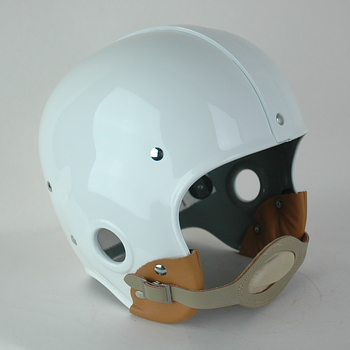 |
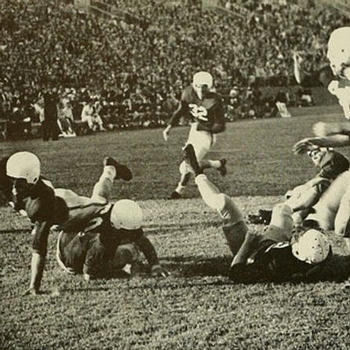 |
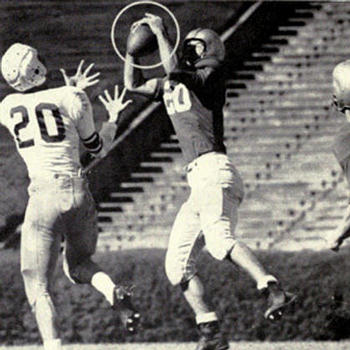 |
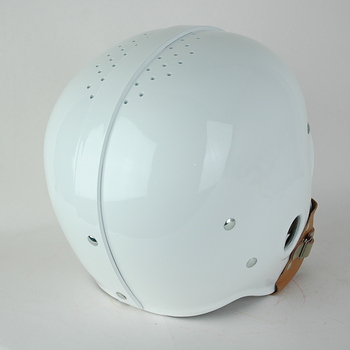 |
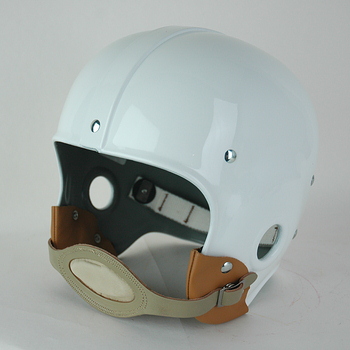 |
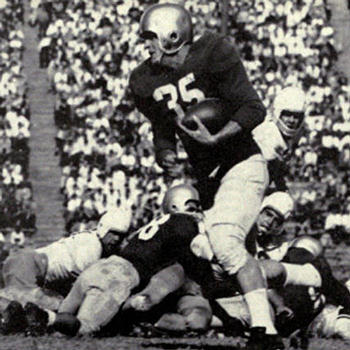 |
With "Red" Drew gone, Alabama brought back a former kicker and lineman from their January 1, 1931 Rose Bowl squad to be their new head coach. Jennings Bryant “Ears” Whitworth, an effective assistant coach at Alabama, LSU, and Georgia before heading the program at Oklahoma A&M (State) was a reminder of the past glory days of the Wallace Wade-Frank Thomas eras and a psychological boost for the entire state. Whitworth was seen as an affable man but one who was often cited for causing the infamous and racist Johnny Bright Incident of 1951 while he was the head coach at Oklahoma A&M. Returning to Bama, his heart was in the right place and he was full of enthusiasm as he declared that "we're going after the best boys who want to come to work here and uphold the great tradition that is Alabama football." Unfortunately, he failed at the Capstone as reflected in his 0-10 first season, and two consecutive 2-7-1 records. As his first Tide team entered the fray, he removed the center stripe from the previous years’ helmets and the squad wore all white shells, Whitworth's personal touch to the uniforms. End Nick Germanos was a second-team All SEC pick and Bart Starr, not truly distinguishing himself, was the quarterback on Whitworth's '55 squad. With many seniors graduating from the 0-10 group, little was expected for ’56, especially with a defense that gave up twenty points or more in every game.
SPOTLIGHT ON BART STARR:
Based upon his NFL Hall Of Fame career, it may be assumed that Bart Starr demonstrated rare ability from his first scrimmage at Alabama to his final varsity snap, leading to a number of distinguished All SEC performances that attracted national attention and the unabashed anticipation of NFL scouts and coaches. This was far from accurate. His high school career at Montgomery’s Sidney Lanier High School indicated potential but got off to a rocky start as he quit the team as a sophomore, returning only due to the threats of his father that it was “football or work” on the family’s garden. He played as a junior only because the team’s starter fractured a leg but Starr came into his own, leading the Sidney Lanier High School Poets to an undefeated season. By his senior season he was an All State and All American performer indicating great college potential. Kentucky’s coach Paul Bryant thought he had the youngster all but signed until Starr decided to attend Alabama in order to remain in proximity to his future wife Cherry whom he married during his sophomore year at Alabama. Unfortunately, Bart Starr's road to his great NFL career was anything but smooth and easy. The Korean War brought a manpower shortage that allowed the varsity participation of freshmen including Starr, and while he gained valuable experience, he was no more than a part-time backup performer to regular quarterback Clell Hobson. The power in this 10-2 team that dismantled Syracuse in the Orange Bowl 61-6 resided in the rushing of Tommy Lewis, Bobby Luna, and Bobby Marlow. However, even at this early stage Starr's intelligence and play-calling ability gained notice and his '53 soph season proved that he had a live-wire arm, was an adept runner, and solid punter with a 41.8 yard per kick average which ranked him second in the nation. The 6-3-3 record earned a Cotton Bowl berth vs. Rice which resulted in a 28-6 loss and Tommy Lewis' infamous off-the-bench tackle. The 4-5-2 record of 1954 brought the resignation of head coach "Red" Drew and Starr missed playing time and performed inconsistently due to a low back injury. Even with a center named Knute Rockne Christian playing in front of him, Starr's senior season was a terrible disappointment as he received limited playing time during the Tide’s winless 0-10 mark under new coach J.B. Whitworth and did little to encourage the pros to covet him as a high draft choice. It took Green Bay until the seventeenth round to finally draft the Bama quarterback and of course, "the rest is history." Despite a slow start with poor Packer teams, the combination of Vince Lombardi and Bart Starr produced the legacy of the great Green Bay Packers that earned Starr’s enshrinement in the Pro Football Hall Of Fame in 1977. The unquestioned leader of the glory teams of Green Bay, Starr took the Pack to two victorious Super Bowls, five NFL championships, and six division titles, throwing for career totals of 24,718 yards and 152 touchdowns. He was the 1966 NFL MVP, a four-time Pro Bowl choice, and a member of the NFL 1960s All Decade Team. Starr became the Packers head coach from 1975 through 1983 and while his years in that role were not as successful as his time as a player, he remains one of the best known and best loved Packers of all time.
Returning to the white shell with a one-inch cardinal center stripe, Whitworth was hoping for more in 1956 as new quarterback Clay Walls, switched from halfback, and a handful of transfers hoped to rebound from the 0-10 horror of 1955. It was not to be as his 2-7-1 record included victories and a tie against weak-sisters Mississippi State, Tulane, and Southern Miss. Once again his team was considered to be undisciplined and soft and he produced no All Americans or any All Conference stars although tackle Dave Sington, son of former Bama 1930 All American Fred Sington and Don Owens played well at end. The alumni were unhappy as the "meat" of the SEC now considered the Crimson Tide a "W" before taking the field of play.
If interested in any of these Alabama helmets please click on the photos below.